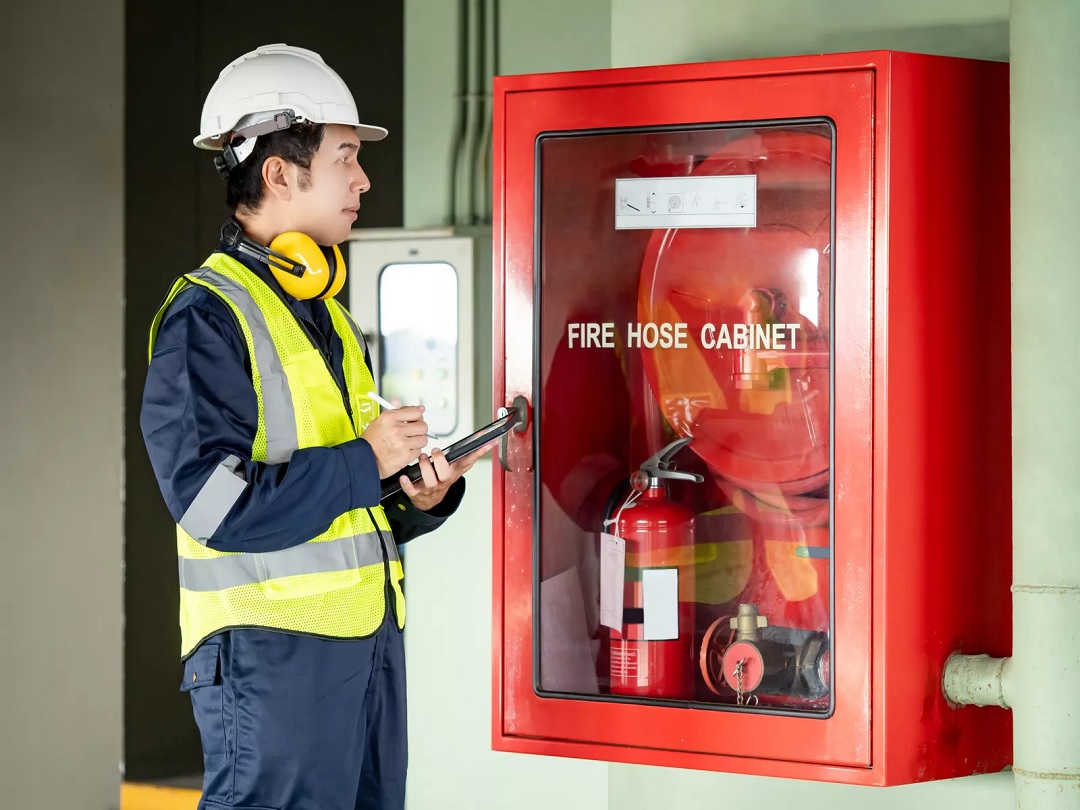In San Antonio, where local conditions can pose unique fire risks, homeowners' associations (HOAs) must prioritize fire safety, using the right tips to help protect life and property. Tailoring fire prevention strategies specifically for these communities is essential to safeguard residents and property.
This article explores practical fire safety tips that can significantly enhance the preparedness and response capabilities of HOAs. By implementing these measures, San Antonio HOAs can effectively mitigate fire hazards and ensure a safer living environment.
1. Implement Regular Fire Safety Inspections
Regular fire safety inspections are a cornerstone of effective fire prevention for homeowners' associations (HOAs) in San Antonio. These inspections help identify potential fire hazards before they can cause harm. This helps in ensuring that all community areas and individual properties comply with stringent safety standards. Professional inspectors play a crucial role in this process, bringing expertise and an unbiased eye to the evaluation.

To systematically implement these inspections, HOAs should consider the following steps:
- Schedule Regular Inspections: Establish a routine schedule for inspections, ensuring they occur at least annually, or more frequently as required by local fire codes.
- Hire Certified Professionals: Engage with certified fire safety inspectors who are familiar with the latest regulations and can provide detailed reports and recommendations.
- Follow Up on Recommendations: Act on the safety recommendations provided by inspectors to rectify issues promptly.
- Maintain Records: Keep detailed records of all inspections, findings, and corrective actions taken. This documentation can be crucial for insurance purposes and legal compliance.
By adhering to these practices, HOAs comply with local fire codes and instill a sense of safety. Regular inspections underscore the commitment of the HOA to protect its residents and properties from the risks of fire.
2. Install and Maintain Smoke Detectors
Smoke detectors are an indispensable tool in early fire detection, significantly increasing residents' safety within any HOA community. Proper installation and regular maintenance of these devices are critical to ensuring their effectiveness in emergency situations. It is essential that smoke detectors are placed in strategic locations throughout the property, including bedrooms and common areas.
Here are some guidelines for the proper management of smoke detectors in HOA communities:
- Installation: Ensure that smoke detectors are installed on every level of the home, including the basement and near all sleeping areas. They should be mounted on ceilings or high on walls, as smoke rises.
- Maintenance: Test smoke detectors monthly by pressing the test button, and replace batteries annually or as needed. Full unit replacements should occur every ten years or according to the manufacturer's recommendations.
- Compliance: Adhere to all local fire safety codes and standards, which may dictate specific requirements for the type and placement of smoke detectors.
- Education: Educate residents about the importance of not disabling smoke detectors and the proper procedures for testing and maintaining their units.
Regular checks and updates will help maintain compliance with safety standards and provide peace of mind for all residents.
3. Establish Clear Evacuation Routes
Establishing clear evacuation routes is crucial for ensuring the safety of residents in the event of a fire. Well-defined paths can significantly reduce confusion and panic, facilitating a swift and orderly evacuation. Homeowners' associations (HOAs) should prioritize the development and maintenance of these routes to enhance emergency preparedness.
To effectively map out evacuation routes, consider the following steps:
- Assessment of Layout: Begin by assessing the layout of the community. Identify all possible exits and ensure they are accessible and free from obstructions.
- Route Designation: Designate primary and secondary evacuation routes for each area of the community. Ensure these paths are logical, lead to safe assembly points, and are suitable for all residents, including those with disabilities.
- Signage: Install clear, visible signs along the evacuation routes. Use reflective materials and appropriate symbols to guide residents during low visibility conditions.
- Communication: Distribute maps of the evacuation routes to all residents and discuss the routes during community meetings. Consider incorporating this information into welcome packets for new residents.
- Drills: Conduct regular evacuation drills to ensure residents are familiar with the routes and procedures. Use feedback from these drills to refine and improve the evacuation plans.
Regular updates and drills will help maintain the effectiveness of the evacuation routes. It can also ensure that all community members are aware of their roles and responsibilities during an evacuation.
4. Provide Fire Extinguisher Training
Fire extinguisher training is an essential component of a comprehensive fire safety strategy for homeowners' associations (HOAs). Providing residents with the knowledge and skills to use fire extinguishers effectively can make a significant difference in the early stages of a fire. It is crucial for HOAs to organize regular training sessions to ensure that all community members are ready.

Organizing these training events involves several key steps:
- Select Qualified Instructors: Partner with local fire departments or certified fire safety professionals who can provide expert instruction.
- Schedule Regular Sessions: Hold training sessions annually or more frequently if needed, to accommodate new residents or refresh the skills of existing members.
- Documentation and Feedback: Keep records of attendance and gather feedback to improve future training sessions.
This training enhances individual safety and contributes to the community's overall resilience in the face of fire emergencies.
5. Create a Community Fire Safety Plan
Developing a comprehensive fire safety plan is essential for any homeowners' association (HOA) to ensure the safety and preparedness of its community. This plan should encompass all aspects of fire safety, from prevention to emergency response, and should be clearly communicated to all residents. A well-structured fire safety plan not only enhances the community's ability to respond efficiently to fire incidents but also minimizes risks and potential damages.
Here are the key components to include in a community fire safety plan:
- Emergency Procedures: Outline specific actions residents should take in the event of a fire. This includes when and how to evacuate, as well as designated safe assembly points.
- Communication Protocols: Establish a clear communication strategy to alert residents of a fire. This may involve alarms, public address systems, or digital notifications.
- Roles and Responsibilities: Define the roles and responsibilities of both residents and HOA staff during an emergency. Assign individuals to assist with evacuation of elderly residents or those with disabilities.
Regular engagement with residents about the fire safety plan is crucial to ensure everyone understands their role in maintaining a safe environment.
6. Manage Landscaping to Reduce Fire Risks
Proper landscaping plays a pivotal role in reducing fire hazards within homeowners' associations (HOAs). Strategic management of the landscape not only enhances the aesthetic appeal of the community but also serves as a critical component of fire safety.
Consider the following landscaping tips to minimize fire risks:
- Choose Fire-Resistant Plants: Opt for plants that are high in moisture content and have low sap or resin levels. Examples include iris, lavender, and maple. Avoid highly flammable species like juniper or eucalyptus.
- Maintain Clear Zones: Create defensible spaces by maintaining a minimum of 30 feet of clear area around structures. This space should be free from dense vegetation, dead leaves, and debris that can fuel a fire.
- Regular Pruning: Keep trees and shrubs pruned to prevent branches from coming into contact with electrical lines or buildings. Lower branches should be trimmed up to reduce the chance of fire spreading from the ground to the tree canopy.
Regular maintenance and adherence to these practices are essential for maintaining a safe and resilient community.
Get Your Association’s Fire Safety Up To Standard
Bringing your association's fire safety up to standard is crucial for the well-being and security of your community. Implementing these fire safety tips can significantly reduce the risk of fire-related incidents and ensure that everyone knows how to respond in case of an emergency. By fostering a culture of safety and preparedness, your homeowners' association can create a safer and more resilient environment for all residents.
Taking proactive steps to enhance fire safety also demonstrates responsible management and a commitment to protecting your community's investment. Regularly reviewing and updating your fire safety protocols, providing ongoing education, and ensuring compliance with local regulations are all essential practices. Together, these efforts will help your association stay prepared, minimize risks, and promote peace of mind among residents. Looking for an expert community management team to help your HOA? Talk to our team today, and let us help you support your community.


